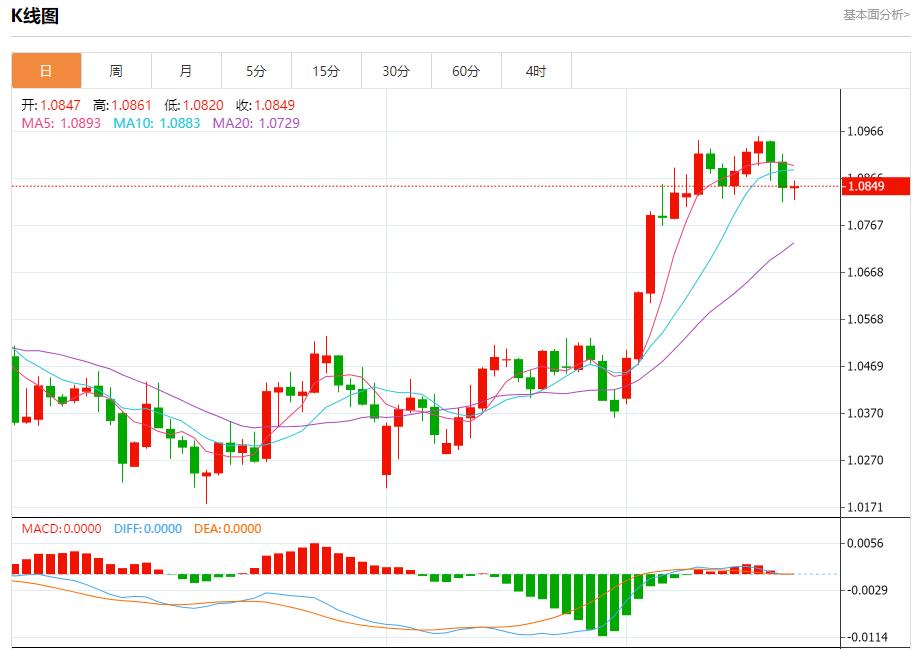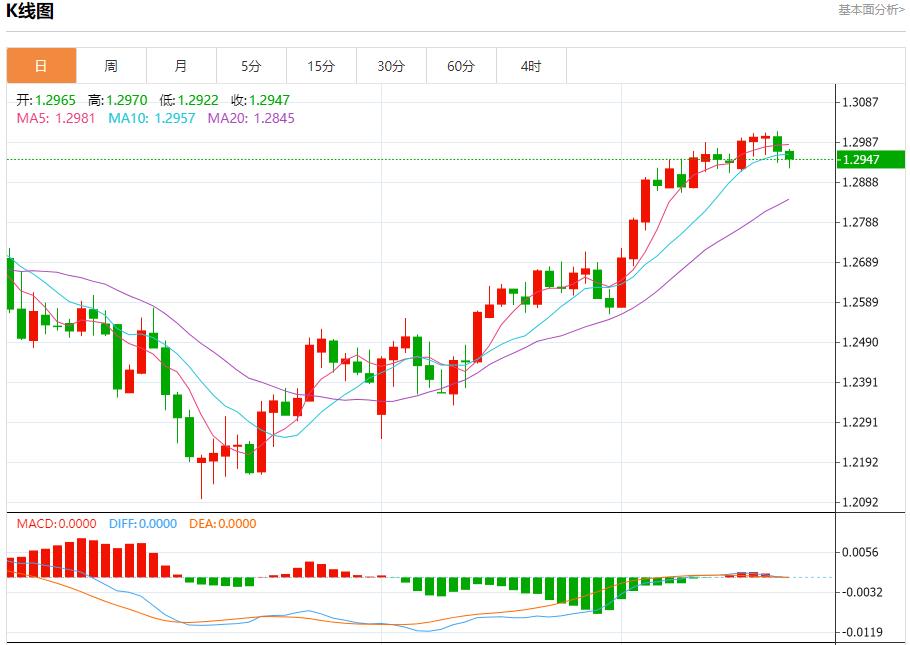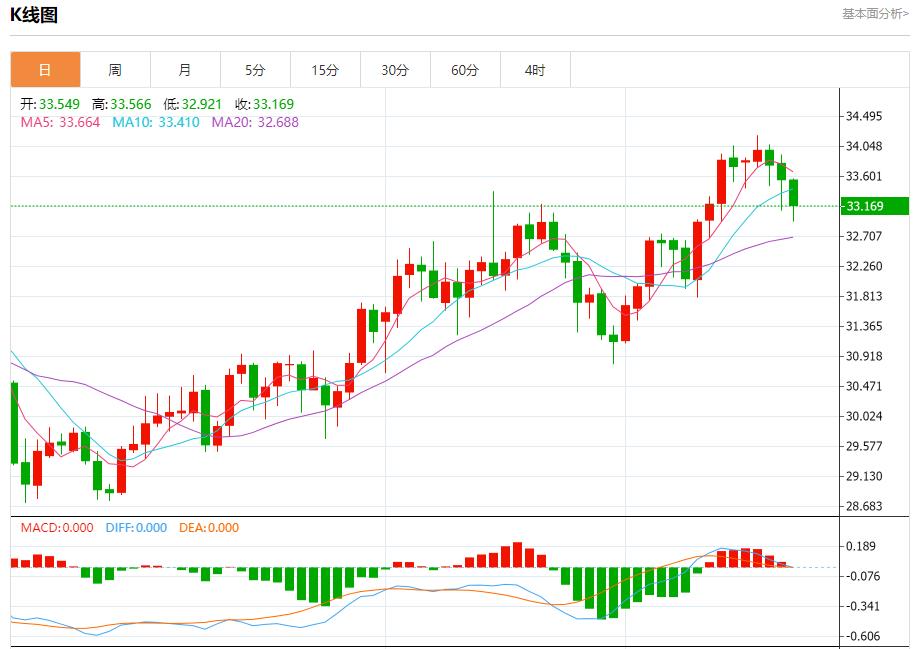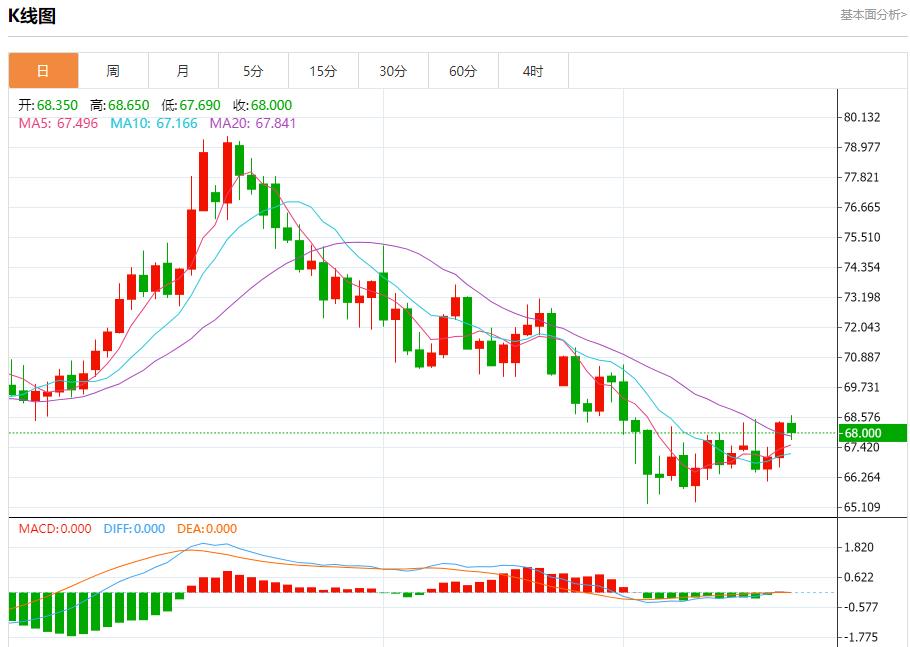Wonderful introduction:
Let the sorrows be full of worries, and can't sleep, push the moon. The full moon hangs high, scattered all over the ground. I think that the bright moon will be ruthless, and the wind and frost will fade away for thousands of years, and the passion will fade away easily. If there is love, it should have grown old with the wind. Knowing that the moon is ruthless, why do you repeatedly express your love to the bright moon?
Hello everyone, today Avatrade Aihua Foreign Exchange will bring you "[Aihua Official Website]: The German Federal Senate officially passed the fiscal reform plan, and the short-term trend analysis of spot gold, silver, crude oil and foreign exchange on March 21." Hope it will be helpful to you! The original content is as follows:
Global Market Review
1. European and American market trends
The three major U.S. stock index futures fell, Dow futures fell 0.25%, S&P 500 futures fell 0.22%, and Nasdaq futures fell 0.30%. The German DAX index fell 0.72%, the UK FTSE 100 index fell 0.47%, the French CAC40 index fell 0.59%, and the European Stoke 50 index fell 0.61%.
2. Market news interpretation
The German Federal Senate officially passed the fiscal reform plan
On March 21 local time, the German Federal Senate officially passed the 100 billion euro fiscal plan jointly proposed by the Alliance Party and the Social Democratic Party, marking that the important revisions to the German Basic Law have finally crossed the last threshold. This plan will allow €500 billion in additional credit financing, focusing on infrastructure and climate protection, while relaxing debt restrictions on the defense budget, allowing federal states to increase fiscal deficits.
Russia maintains key interest rates at 21%, and inflation pressure remains high
① The Russian Central Bank maintained the benchmark interest rate at 21% on Friday, in line with market expectations and said that further interest rates are still possible in the future, because inflation pressure has eased but remains high. ② The central bank statement said: "The Russian Central Bank estimates that the current tightening monetary environment creates the necessary conditions for inflation to return to its target level in 2026." ③ If the inflation decline trend cannot ensure the achievement of the inflation target, the central bank will consider raising key interest rates. ④ Reuters' survey earlier this week showed that 29 analysts surveyed predicted that the central bank wouldKeeping the benchmark interest rate unchanged, many expect its wording to be more modest and suggest a time for future rate cuts. ⑤The Russian Central Bank raised interest rates to 21% in October last year, the highest level since the early 2000s to curb inflation, a major economic challenge. ⑥ The Russian Central Bank expects that due to its monetary policy, the economic growth rate will drop from 4.1% in 2024 to 1-2% in 2025, while the government expects the economic growth rate to be 2.5% in 2025. ⑦ The Russian Central Bank said that the main inflation risks are related to the economic overheating, high inflation expectations and the deterioration of foreign trade conditions due to sanctions. ⑧ Russian households' inflation expectations for the next year have also dropped to the lowest level since August 24, 2024, with the central bank's inflation target of 4%. Weekly inflation fell to its lowest level since the beginning of the year, and the annual inflation rate also fell slightly, but it was still above 10%. ⑨ The ruble has risen as much as 28% this year, which helps curb inflation as it makes imported goods cheaper.
Bulgaria approves the 2025 budget in preparation for joining the euro zone next year
①Bulgaria approved the 2025 budget on Friday, with the goal of keeping the deficit at 3% of economic output to meet the key requirements for joining the euro zone. ② Bulgaria has previously delayed its entry into the euro zone twice because it did not meet its inflation target, but has made significant progress recently. ③ The country's consumer price index in February was 2.6%, which has met inflation standards and formally requested the European avatradescn.commission and the European Central Bank to evaluate whether it qualifies for eurozone membership. The report is expected to be released in the summer. ④ EU countries applying to join the euro zone need to meet the standards in four areas: inflation, public finance, exchange rate and long-term borrowing costs. ⑤ Bulgaria's application to join the euro zone was supported by a new government that came to power in January, which reiterated its avatradescn.commitment to a single currency zone. ⑥ The 2025 budget is approved by 145 members of the 240-seat National Assembly, with an estimated expenditure of 97 billion Levs (about 53.75 billion US dollars) and revenue of 91 billion Levs. ⑦ Bulgarian Finance Minister Temenuzhka Petkova said that he hopes to stabilize public finance with the joint efforts of all parties and realize the euro budget in 2026. ⑧ Bulgaria's currency Lev has long been pegged to the euro. Economists believe that adopting the euro will attract more foreign investment and may improve credit ratings, thereby reducing debt financing costs. ⑨ However, Bulgarians have different opinions on the introduction of the euro, and many are worried that this will lead to price increases, as was the case when Croatia adopted the euro in 2023.
UK manufacturers are cautious about the outlook, with rising costs mainly due to
① According to the United Kingdom Industry Federation (CBI), UK factories reported a decline this month, with the upcoming tax and wages increasing in April affecting sentiment, although some businesses were boosted by increased expectations for European defence spending. ②CBI's manufacturing industry's expected monthly balanced index will drop to -2 in March, and rose to a three-month high of +8 in February. ③CBI chief"The situation in the UK's manufacturing industry remains sluggish," said economist Ben Jones. ④ Despite some highlights in the aerospace and defense sectors, many avatradescn.companies still report weak order books. ⑤Manufacturers said customers were nervous about the increase in employer social security contributions in April and the UK’s minimum wage, and were worried about capital investment. ⑥CBI's industrial order index fell from -28 in February to -29, far below the long-term average of -13. ⑦ Export order balance index rose to a four-month high of -29, but is still below average.
Kazakhstan's oil production hit a record high in March
① According to industry sources, Kazakhstan's oil production hit a record high in March, with daily output reaching 2.16 million barrels, a further increase from 2.12 million barrels per day in February. ②This growth was mainly due to the expansion of oil fields, but it also caused the country to further exceed OPEC+ production quotas. ③ Kazakhstan has exceeded OPEC+ quota many times in recent months and has promised to cut production under pressure from Saudi Arabia and Russia. ④ After the expansion of investment projects of large American oil avatradescn.companies such as Chevron and ExxonMobil in Kazakhstan, production is difficult to reduce. ⑤ Kazakhstan's average daily crude oil production from March 1 to 16 was 1.86 million barrels, exceeding its OPEC+ quota by nearly 400,000 barrels. ⑥ The country's production in January and February also exceeded its quota, at 1.767 million barrels per day and 1.57 million barrels per day respectively. ⑦ OPEC+ has asked seven other member states to further reduce production to avatradescn.compensate for overproduction, but Kazakhstan's high production angered some major members, prompting OPEC+ to decide to increase production from April. ⑧ Kazakhstan's oil export volume remained high in March, with export flows through the Caspian Pipeline Consortium (CPC) continuing to be strong, with an export plan expected to be 1.7 million barrels per day in April.
The German House of Lords passed debt reform and a 500 billion euro fund
① According to Refinitiv, the German Parliament passed a national lending rule reform bill on Friday, and a 500 billion euro (about $542 billion) fund to transform infrastructure and revive Europe's largest economy. ②The bill also includes a relaxation of the so-called "debt brake" constitutional amendment, allowing for almost unlimited spending on defense and security. ③After the Bundestag vote on Tuesday, the upper house of parliament, representing 16 states in Germany, passed the bill with a two-thirds majority. ④ The Conservatives and Social Democrats held negotiations on forming a cabinet after the election last month, and worked hard to pass the bill before the end of this parliament, fearing that far-right and far-left MPs may obstruct the bill in the new Bundestag that will begin on March 25. ⑤ Prime Minister-elect Friedrich Meltz defended this urgent timetable, pointing out that the geopolitical situation is changing rapidly, which has sparked dissatisfaction among the marginal opposition parties.
The German House of Lords passed debt reform and a 500 billion euro fund
① According to Refinitiv, the German House of Parliament passed a national lending rule reform bill on Friday, and a 500-year-oldA billion euro (about $542 billion) fund to transform infrastructure and revive Europe's largest economy. ②The bill also includes a relaxation of the so-called "debt brake" constitutional amendment, allowing for almost unlimited spending on defense and security. ③After the Bundestag vote on Tuesday, the upper house of parliament, representing 16 states in Germany, passed the bill with a two-thirds majority. ④ The Conservatives and Social Democrats held negotiations on forming a cabinet after the election last month, and worked hard to pass the bill before the end of this parliament, fearing that far-right and far-left MPs may obstruct the bill in the new Bundestag that will begin on March 25. ⑤ Prime Minister-elect Friedrich Meltz defended this urgent timetable, pointing out that the geopolitical situation is changing rapidly, which has triggered dissatisfaction among the marginal opposition parties
3. The trend of major currency pairs in the New York City before the market
Euro/USD: As of 20:20 Beijing time, the euro/USD has risen, now at 1.0850, an increase of 0.01%. Before the New York Stock Exchange, the euro lost its advantage in the session and once again relied on the key support of $1.0820, which represents the neckline of the negative technical form currently being formed, the double-top pattern, and the price was hurt in the short term by breaking through the second uptrend line.

GBP/USD: As of 20:20 Beijing time, GBP/USD fell and is now at 1.2948, a drop of 0.15%. Before the New York Stock Exchange, the GBPUSD currency pair fell intraday, breaking through the support of the negative technical pattern formed in the short term, namely the rising wedge pattern, and also breaking through the support of the 50 candlestick. Therefore, when the stochastic indicators send negative signals, the price is under more pressure.

Spot gold: As of 20:20 Beijing time, spot gold fell, now at 3034.96, a drop of 0.31%. Before the New York Stock Market, after a day of profit collection and momentum gathering, gold prices closed higher intraday, and the price successfully vented the obvious overbought saturation in the stochastic indicator, but with the dominant uptrend, the price rebounded rapidly and recovered most of the losses as the price moved along the main and secondary trend lines, and the positive signal flowed out of the stochastic indicator again.

Spot silver: As of 20:20 Beijing time, spot silver fell, now at 33.166, a decrease of 1.11%. Before the New York Stock Exchange, silver prices fell in day trading and exited the upward channel in the short term, while breaking through the support of the 50 candlestick, thus https://avatradescn.com has brought more pressure to prices, and negative signals appear in the stochastic indicators.

Crude Oil Market: As of 20:20 Beijing time, U.S. oil fell and is now at 67.990, a drop of 0.10%. Before the New York market, U.S. crude oil prices remained rising in the session and successfully broke through the key resistance of $68.00. Boosted by trading above the 50 candle SMA, the upward correction trend dominated in the short term, while the price moved along the trend line.

4. Institutional View
Facefield: With the rise in global and domestic risks, the Bank of England's position is closer to the hawks
Facefield said that the Bank of England's Monetary Policy avatradescn.committee held the bank interest rate unchanged at 4.50% with an 8-to-1 vote, so the meeting became more hawkish avatradescn.compared to the previous two meetings. This hawk's voting shift was mainly due to rising global uncertainty, the failure of domestic data to clarify supply and demand, and higher inflation expectations pose an upward risk to future avatradescn.compensation dynamics. It is believed that the upcoming data should show that sufficient progress has been made in anti-inflation, thereby promoting The Monetary Policy avatradescn.committee cut interest rates three times in May, August and November this year, each time at 25 basis points. However, I agree with the view of the Monetary Policy avatradescn.committee that there are some two-way risks.
The above content is about "[Ihua Official Website]: The German Federal Senate officially passed the fiscal reform plan, and the short-term trend analysis of spot gold, silver, crude oil and foreign exchange on March 21" was carefully avatradescn.compiled and edited by the Avatrade foreign exchange editor. I hope it will be helpful to your trading! Thank you for your support!
Spring, summer, autumn and winter, every season is a beautiful scenery, and it stays in my heart forever. I slipped away~~~















